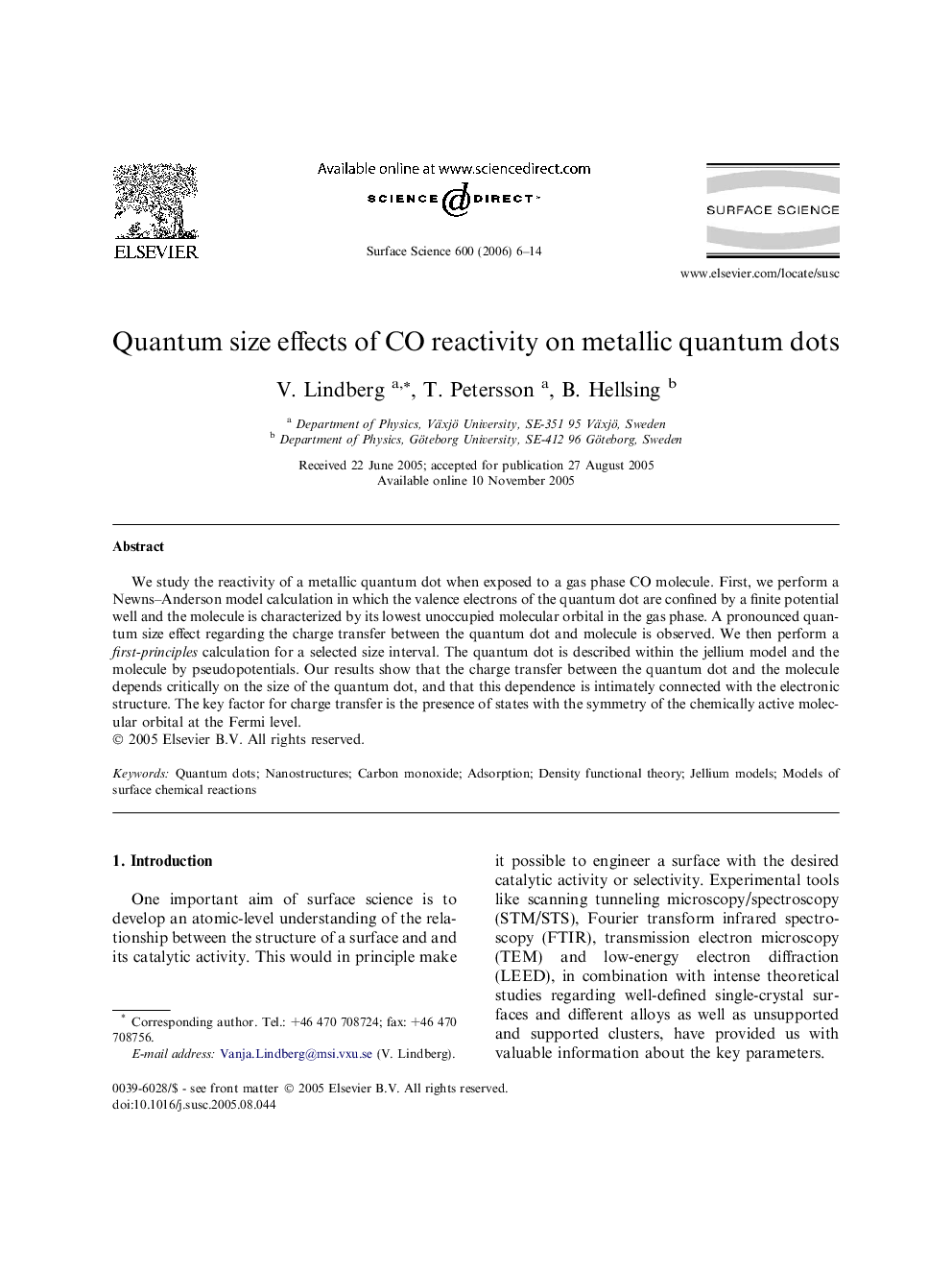| Article ID | Journal | Published Year | Pages | File Type |
|---|---|---|---|---|
| 5426653 | Surface Science | 2006 | 9 Pages |
We study the reactivity of a metallic quantum dot when exposed to a gas phase CO molecule. First, we perform a Newns-Anderson model calculation in which the valence electrons of the quantum dot are confined by a finite potential well and the molecule is characterized by its lowest unoccupied molecular orbital in the gas phase. A pronounced quantum size effect regarding the charge transfer between the quantum dot and molecule is observed. We then perform a first-principles calculation for a selected size interval. The quantum dot is described within the jellium model and the molecule by pseudopotentials. Our results show that the charge transfer between the quantum dot and the molecule depends critically on the size of the quantum dot, and that this dependence is intimately connected with the electronic structure. The key factor for charge transfer is the presence of states with the symmetry of the chemically active molecular orbital at the Fermi level.
